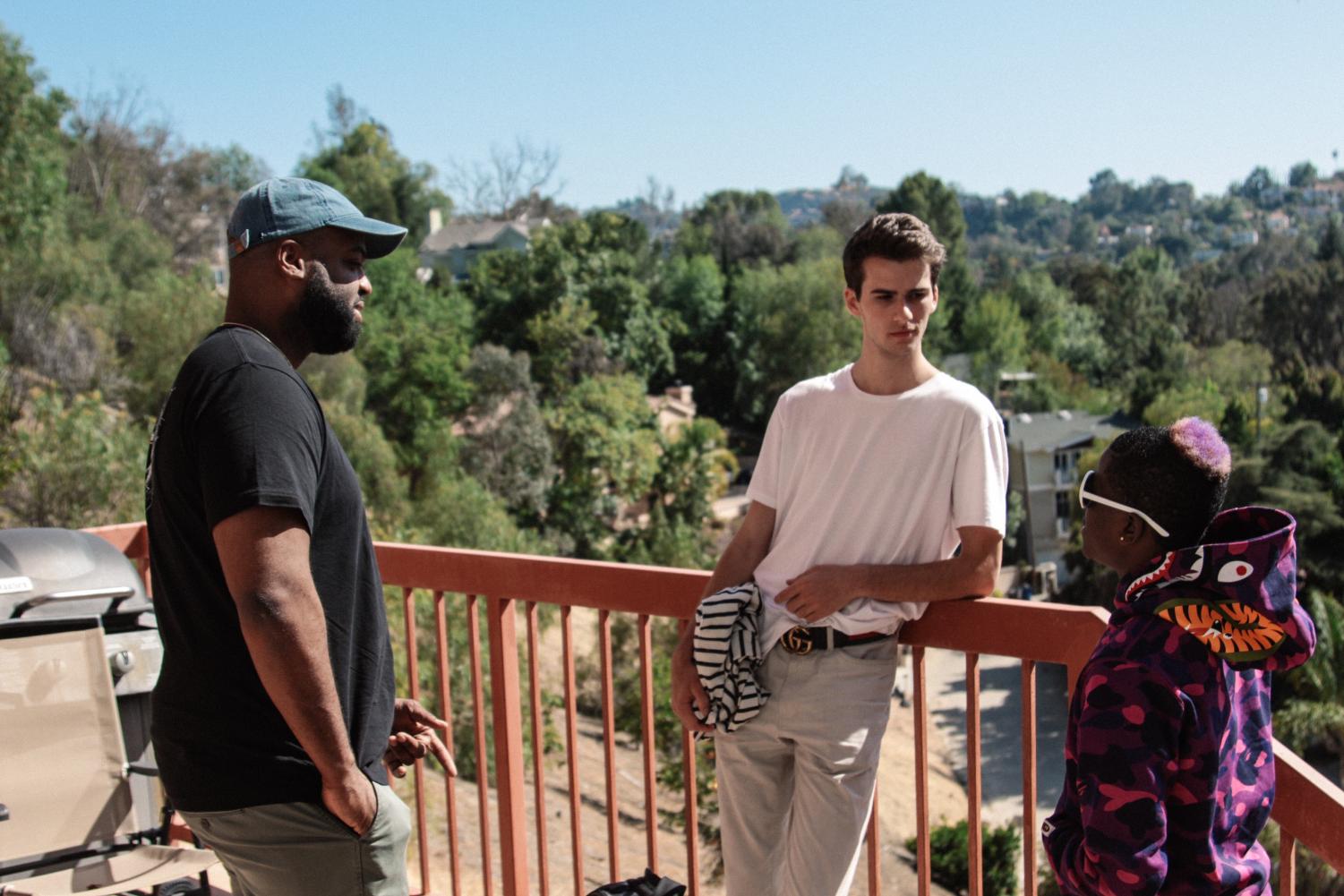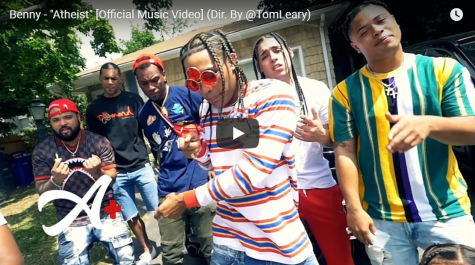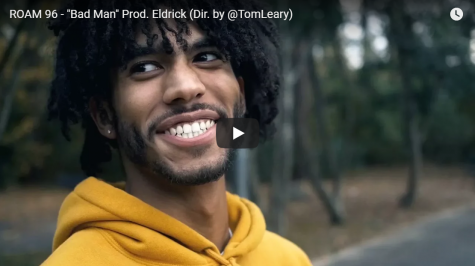Student profile: Tom Leary, professional videographer and entrepreneur
"Craft, character and network are the three most important things I pay attention to, because those are the three components I believe artists need to have on lock to be ready for widespread recognition."
September 26, 2018
As he enters his last year as a student at the University of Massachusetts Amherst, Tom Leary has an unusually long resume in his back pocket. Since his freshman year, he’s helped a startup land a $200,000 deal on Shark Tank, he’s flown around the country and beyond shooting flashy music videos for hip-hop artists, and to boot, he’ll soon graduate with two degrees.
We asked him to tell us more about his story, his visions for his production company, and how he keeps an eye on all of the moving parts in front of him.
Liam O’Connor: Thanks for taking the time to interview. Where are you from?
Tom Leary: Thanks for having me! I’m from Holliston, a small town outside of Boston.
LO: How old are you?
TL: I’m 22 years old.
LO: What do you study at UMass?
TL: I’m currently finishing my final year in a five-year program for two degrees in Landscape Architecture.
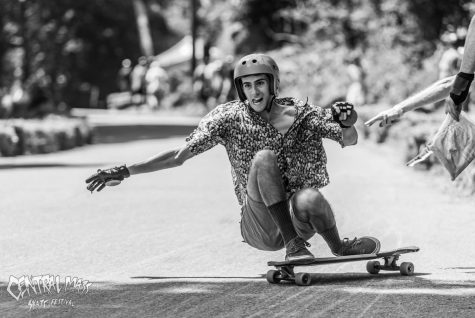
LO: Best place to longboard near UMass? Or maybe you don’t want to blow up the spot.
TL: My friends and I skate a bunch of different hills and mountain access roads in Western Mass. Most of them are already partially blown because people found out where they are and skated them recklessly, which gets the police called. There are plenty of videos of us skating the roads, though.
LO: When did you start making videos? Was it your first creative outlet, or did you start off making music or other visual art?
TL: I got my first camera when I was 12. It was a Flip camera, which is the type of thing a dad-tographer might use to shoot family vacation footage. I used industrial Velcro to attach a fisheye lens that gave the footage a wide-angle perspective, which is desirable in skate videos. It was mainly street skating stuff until eighth grade when I saw that some kids in my town were sponsored for downhill longboarding. I had no idea how to skate hills, so I filmed them, asked way too many questions and fell hundreds of times trying to learn. Pretty soon, I was able to safely skate while filming alongside them down the big hill in our town. I became sponsored by a few longboard brands, who I still work with (Pantheon Longboards, Metro Wheels, Valkyrie Truck Co. and Push Culture Apparel). We kept cranking out videos with the Flip camera until a video with my friend Norm racked up 60,000 views on my YouTube channel.
At that point, I convinced my parents I had outgrown the Flip camera and asked for a more professional DSLR for Christmas. They helped me out, and my love for building hype around brands and products through content creation continued to grow.
LO: So how do you find new artists to work with?
TL: I started introducing myself to artists at basement shows in Amherst freshman year. One of the artists I met flew me to LA and Kenya with him for a collective month to shoot music videos that were featured on Sports Illustrated, The Fader, XXL and Newsweek Europe. Today, any artists who want to work with me send their tracks to the A+ email ([email protected]), and I pick the tracks I think I can make hits with. Most artists I work with today find me either through my Instagram (@tomleary) or through word of mouth.
LO: Let’s say an artist hits you up, looking for a video. What are you looking for from that artist before they get the green light?
TL: If I dig the tracks they send in, I’ll hop on a FaceTime with them. The biggest thing I look for is potential to create a hit. Craft, character and network are the three most important things I pay attention to, because those are the three components I believe artists need to have on lock to be ready for widespread recognition.
LO: You work mainly with rap artists. Any big names yet?
TL: I’ve worked with a few well-known artists, and take pride in making hits out of tracks with artists who’ve developed their sound to be worthy of widespread recognition, but haven’t had their big break yet. I’ve worked with SnapDogg, $tupid Young and TraeDaKidd, and I just broke my first artist in August, Young Lama, who is now able to support his family with his music career alone. That feels truly special to me.
LO: Favorite music video ever? From any era.
TL: The first time I was inspired to make music videos was when I saw “Get Back” by Ludacris back in middle school. I didn’t start shooting music videos until my junior year of high school, but the energy and nostalgia I felt from that video certainly stayed with me.
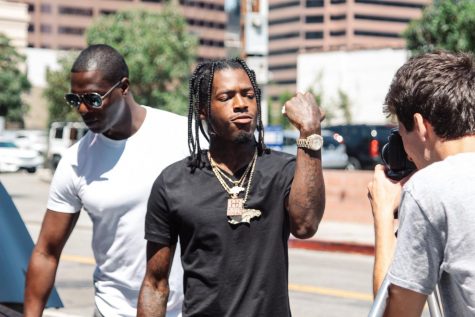
LO: Are you still a student? How do you balance school work with your shooting/editing work?
TL: I’m still a full-time student. I realized I wasn’t going to be a landscape architect my sophomore year at UMass shortly after a friend talked me into joining Entrepreneurship Club. I haven’t second-guessed that decision since. I was so sure of it that I took a 23-credit semester and a 20-credit semester so I would have more time to work on my ventures as the end of college neared. I had to do some sort of override that normally isn’t allowed, but I made a strong case and they let me do it. I was also working on two different startups during those crazy semesters. The plan worked because during my fourth year I was able to be a part-time student while working on my venture (DetraPel) that launched on ABC’s Shark Tank in January. We got a deal with Marc Cuban and Lori Greiner.
LO: Wow. So you helped send a company to Shark Tank AND you took home a deal. What was your role in the company, and how did you get involved with the people you built it with?
TL: I met my good friend, current housemate and business partner Steve McKinney through the Entrepreneurship Club, and we started a business together. He’s the one who helped steer me in the direction of becoming more valuable than just a content creator, as a multidisciplinary designer, marketer and business developer. The company we started, Brodly Inc., pivoted in its focus a few times, but we ended up going through the Venture Valley Mentors startup accelerator in Springfield, Massachusetts. One of the co-founders of the organization, Paul Silva, introduced us to David Zamarin, a Babson student who had been doing R&D for his nanotech product, DetraPel. Steve and I worked with David to build the B2B and B2C infrastructure of the company, and I served as Head of Marketing and Creative Development. We spent the summer of 2017 in the Babson Summer Venture Program, working in a collaborative space in Boston called Workbar. Since the Shark Tank launch, Steve and I moved onto more personal projects while the company is on track to do $6 million this year. There is a team of interns maintaining what we built with David and one other Babson student.
LO: Seems like you’ve got a lot of real-world experience under your belt. What made you decide to stay in school and finish up at UMass?
TL: Late sophomore year, I decided I would only do what I want to do in life. That includes being able to answer “yes” to the unavoidable question, “Did you finish college?” I need to finish every major project I commit to, or it just stays with me. On top of that, the best part of a formal education can extend beyond the classroom and the piece of paper you get at the end. The most important things I’ve gained at UMass are the people I met and built brands with. I wouldn’t be doing exactly what I am today if I hadn’t met them, and I have UMass to thank for that.
LO: Your channel, A+ Visuals, has over 7,700 subscribers. When did A+ form, and what inspired you to take that next step and get organized with your co-chief, Jonny Nash?
TL: I started it going into 2018 with a hometown friend, J Nash (@j.nassh), who is a producer and creative director. He just graduated from UMass with a bachelor’s degree in communications. We had both been shoulders-deep together in the startup world and realized we had moved away from what we truly love to do, so we started doing exactly what we wanted together — building artist brands from the ground up and premiering them on our own YouTube channel.
LO: The description of your channel emphasizes the “high-end” nature of your production. What sets you apart from other people? Do you see a lot of lazy video work out there?
TL: The big difference between me and someone’s buddy with a DSLR camera is the reality that I’ve been making videos for over a decade, and the marketing and business development background allows me to focus on building artist brands from the ground up instead of just trying to do as many videos as possible to make a quick buck. I don’t do caps on shoot times, and I don’t limit the amount of re-edits I do to make a video “perfect.” I tell artists I can make their wildest dreams come true in terms of how the video will look, and then do everything I can — often times innovating my own craft in the process — to get the job done. I carefully pick the tracks and artists I work with because I’m only here to make truly special music videos and lasting careers for artists in the music industry. It took a lot of time and resources to get to a point where I can honestly tell myself the product I create can change someone’s life, but now people are starting to notice and take advantage of it.

LO: Do people ever try to short-change you? I know music producers are constantly getting inexplicably cheap bids for their work. How do you respond to people who undervalue your work?
TL: Early in college, I was fortunate enough to work with people who respected my craft and paid for videos upfront. That’s the only thing I can really ask for in an artist relationship, beside exclusivity, and it’s not that difficult to accomplish. Unfortunately, some people wanted to get as much value as they could out of me before they started to fall off from their own music careers entirely. You don’t know how people can use you until it happens for real, and then you have to just learn and prevent the same thing from ever happening again. I’ve been lucky enough to find the right people and build meaningful relationships so I know what to look for today, instead of working with every artist who comes my way. Now, I’m picky enough about who I work with that I can pour everything out on the table for them and know the value will be reciprocated. I also don’t do contracts with artists. It’s my symbolic way of saying I don’t work with people who I don’t trust.
LO: I want to hop inside your creative process for a second; can you talk about how this shot from the video for Benny’s “Atheist” came together? How do you design or outline a video before shooting?
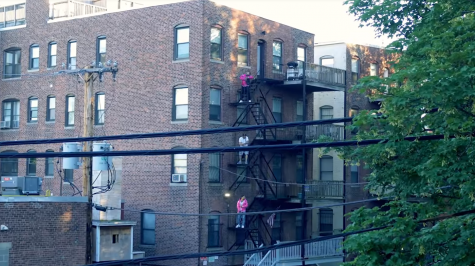
TL: For that shot in particular, I was inspired by Jay Rock, Kendrick and Future’s video for “King’s Dead.” I love the far away shots where the artists are the focal point, but still part of a much larger picture. It just looks cool. With every project, I want to create a look and feel that is unique to the artist I’m working with. I want people to feel a certain way when they watch every video, and I don’t release anything that I don’t think fulfills that goal. That way, when people hop on YouTube and go through the A+ channel, they enter a whole different world I’ve created.
LO: Tell me about your favorite video shoot. What made it stand out?
TL: The first time I worked with Roam, an artist in Atlanta, it was over a weekend when my flight was booked to land me in Atlanta less than 24 hours before my return flight. That is still one of my favorite projects to date because I threw myself into a new city I had never been to before and was tasked with creating something dope within a day. I had never met Roam, and we didn’t decide the track we wanted to shoot for until I met him in Atlanta. It was also one of my first times using hand-drawn animation in a music video, and I’m happy with how it came out.
LO: A lot of people would regard Cole Bennett and his company Lyrical Lemonade as major spearheads for the contemporary music video industry. How do you see his influence in your field? And are there other people breaking ground in the field?
TL: There has been a steady progression, even before Cole Bennett, that I’ve seen since before Migos were as big as they are today. A Zae Productions is an OG in the music industry, and I think he helped set the stage for what it all looks like today. Then Laka Films came along and shot as many videos as he could with as many artists as he could. That worked well, and he was able to pop artists like Famous Dex before the new wave came along and people like Cole Bennett pushed boundaries even further in terms of how music video directors can give artists careers. Every director I just mentioned has had a huge influence on everything in the music industry because it sparked a movement that allows artists who would never initially get in with big labels to get their careers popping without a label. Labels look for artists who can sell and make them money. I look for artists who I believe are worthy of widespread recognition. Those two things might sound the same, but putting one before the other makes a difference in who gets the help they need.
LO: Is there anyone in the video world you look up to or really want to work with?
TL: Cole and Nicholas Jandora are two people I would love to collaborate with. They don’t see creative work as competition between directors, artists and people who are involved with the creative process. It’s refreshing to work with people I share ideologies with, and they are ahead of me in the game.
LO: What’s next for you and for A+ Visuals?
TL: We’re just getting started! We’ll continue to build artists we believe in, on a platform that will hopefully be bigger than us if we keep up the grind. Creating unique art and building artist careers is the paramount objective with A+, and that will never change.
***
Check out more of Tom’s work on his channel, A+ Visuals.
Email Liam O’Connor at [email protected], or follow him on Twitter @LiamOConnnor.
